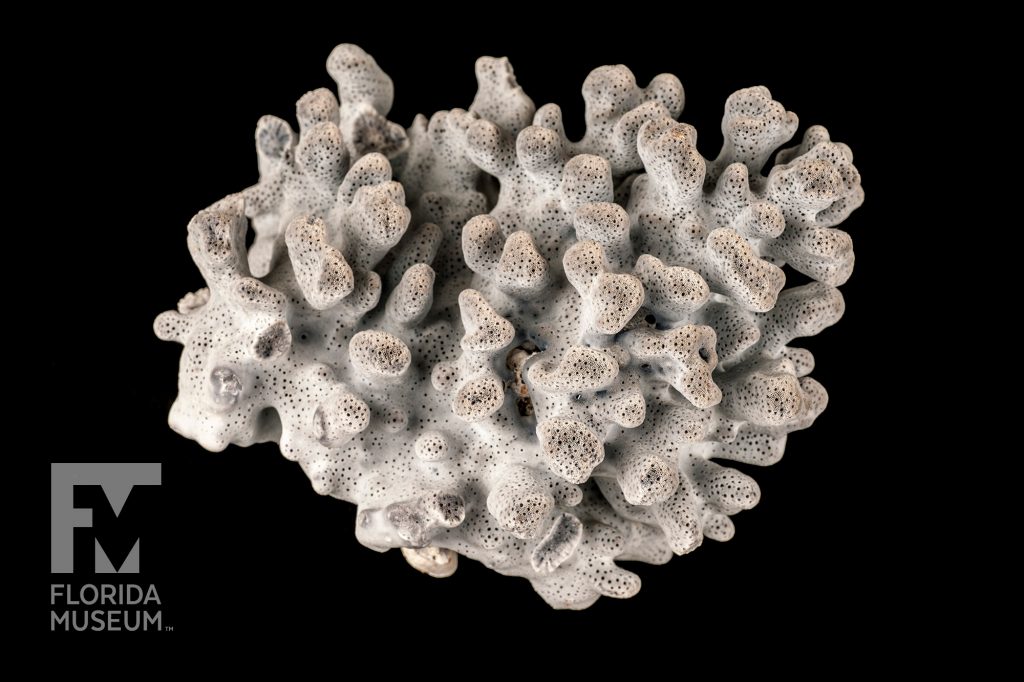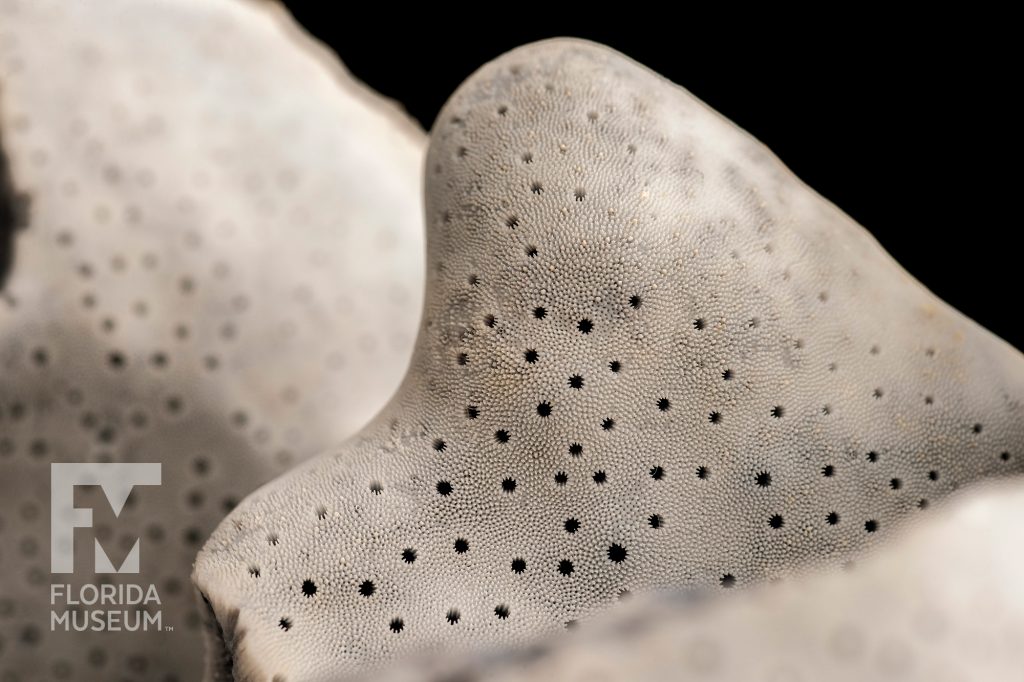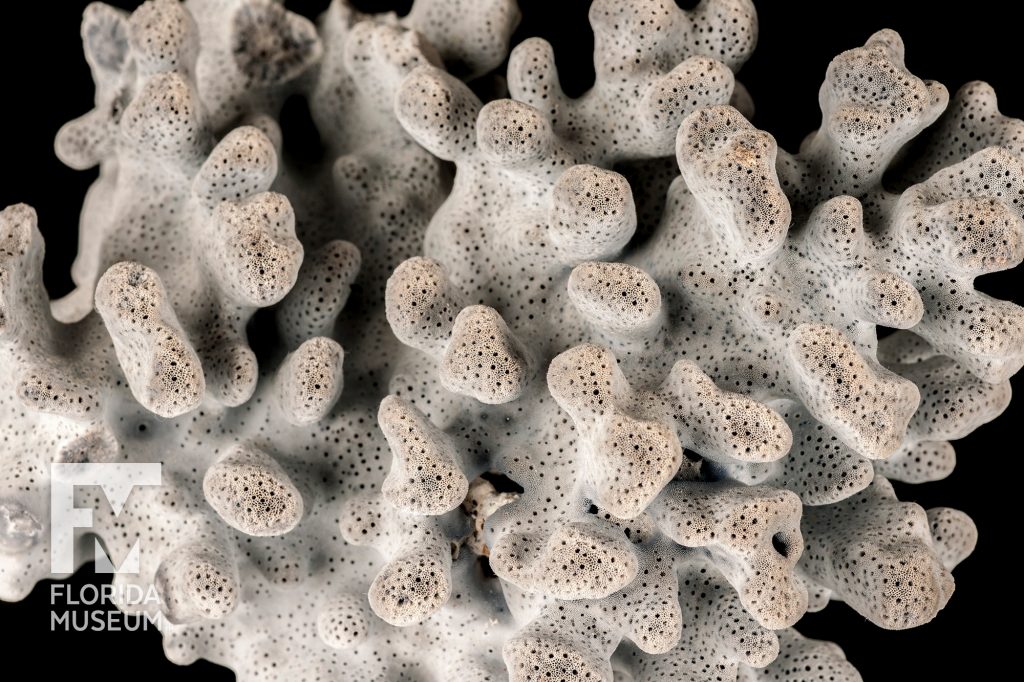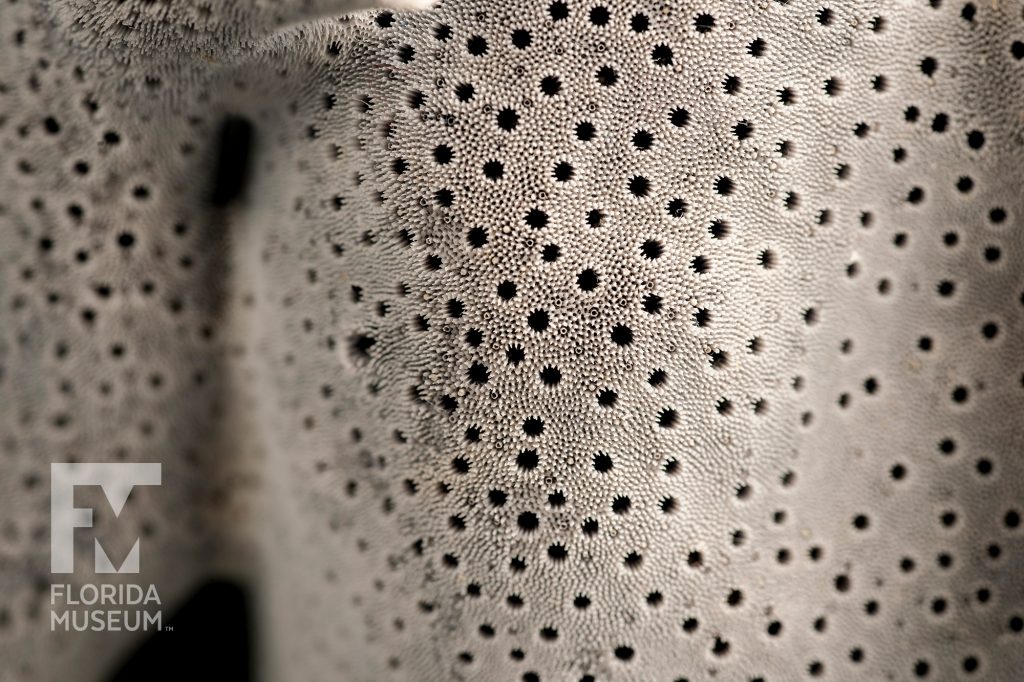Stony corals produce a white calcium carbonite skeleton, while Blue Corals have a unique pigment in their skeletons that gives them a deep blue color. Blue Corals have changed little over millions of years.
Summary
Blue Coral (Heliopora caerulea)
From Pacific Ocean, mid-20th century
Collection
Story
Corals are animals in the phylum Cnidaria, a very, very large group of organisms that secrete a limestone skeleton. It’s really a common name; it goes back to the days of the mariners that struck reefs made of corals. Most corals that form reefs belong to a single group of animals called the stony corals, but they are not the only animals that have evolved this ability to secrete a limestone skeleton. That has evolved in a couple of other groups of Cnidarians and one of these is the Blue Coral.
Blue Coral live only in the Indo-Pacific in the tropics of the Indian and Pacific oceans and they are unusual in that they are blue in color, they have a blue skeleton — all other corals just about have white skeletons — and also in that they haven’t changed in their form for over 60-70 million years. They were the same looking animals way back in the Age of the Dinosaurs as they are today.
So when we look at them we think that we’re dealing with a single species of an important reef-former in these waters, but it turns out that there is multiple species that scientists have mistaken and thought they were one. And this is a very common problem in marine science because marine animals often tell each other apart by smell not by looks, so they may smell very different to each other, but still look alike and different species as a result can be confused by an observer who is looking for visual differences.
Gustav Paulay
Curator, Invertebrate Zoology*
Florida Museum of Natural History
Exhibit
On display Sept. 23, 2017-Jan. 7, 2018, Rare, Beautiful & Fascinating: 100 Years @FloridaMuseum celebrated the Museum’s rich history. Each Museum collection was asked to contribute its most interesting items and share the stories that make them special. Though the physical exhibit is closed, this companion website remains online, providing an opportunity to experience the Florida Museum’s most treasured specimens.
Exhibit Area: Objects Tell Stories
Theme: Biodiversity Hot Spots (Reefs)
 Want to see more? Explore more than 300 breathtaking color photos of plants, animals, fossils and cultural heritage materials from the Florida Museum of Natural History’s collections in the award-winning book All Things Beautiful available from the University Press of Florida.
Want to see more? Explore more than 300 breathtaking color photos of plants, animals, fossils and cultural heritage materials from the Florida Museum of Natural History’s collections in the award-winning book All Things Beautiful available from the University Press of Florida.
*This title was accurate at the time the exhibit was on display in 2017. Please visit the collection website to verify current staff and student information.



